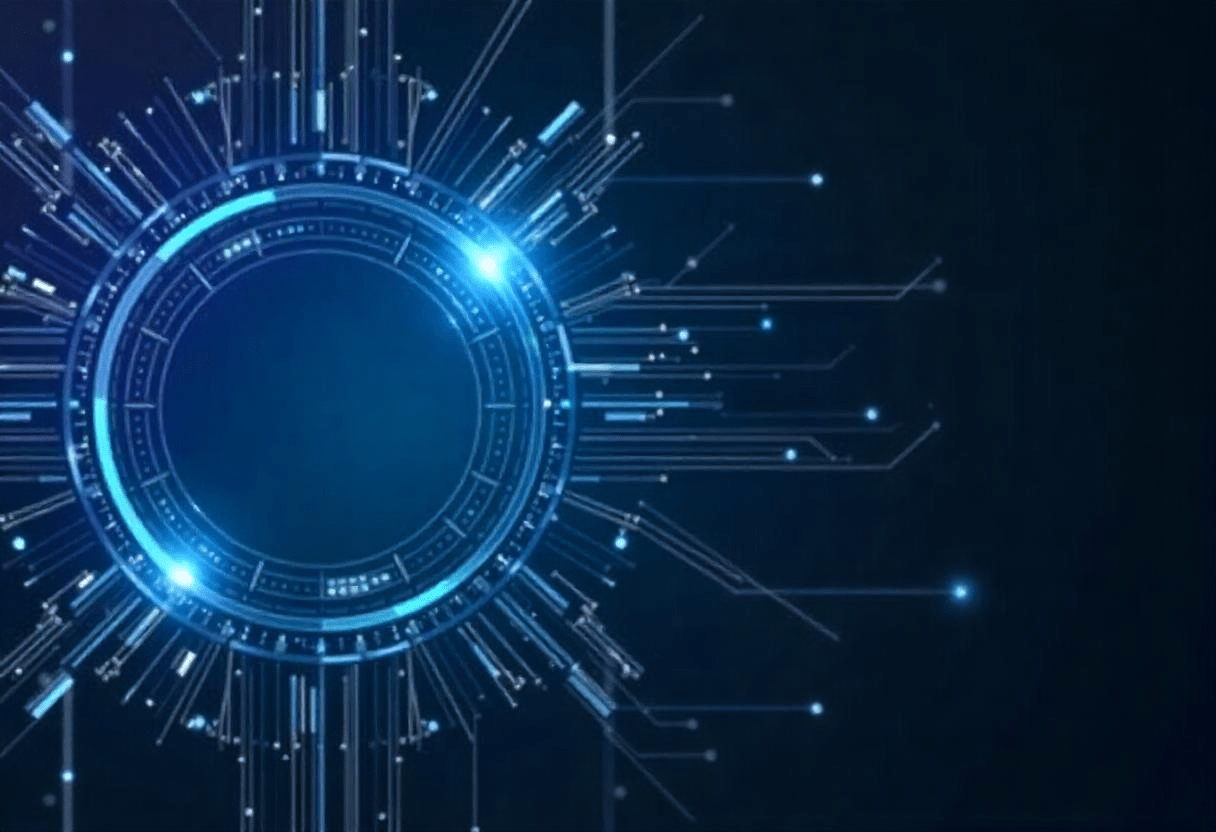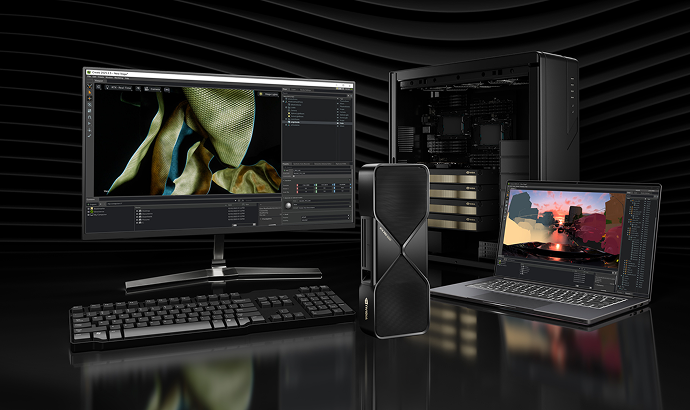

Writing About AI
Uvation
Reen Singh is an engineer and a technologist with a diverse background spanning software, hardware, aerospace, defense, and cybersecurity. As CTO at Uvation, he leverages his extensive experience to lead the company’s technological innovation and development.

The NVIDIA H100 is a server-grade Tensor Core GPU specifically engineered to handle demanding artificial intelligence workloads, including large-scale model training and real-time inference. It is built on NVIDIA’s Hopper architecture, which provides significant advancements in speed and scalability for high-performance computing.
The full potential of the NVIDIA H100 GPU is dependent on robust and specialised AI server support. Without meticulous maintenance, security protocols, and performance optimisation, organisations risk operational inefficiencies, performance bottlenecks, security breaches, and a suboptimal return on their investment in the hardware.
AI server support is a specialised field that includes the strategies, tools, and processes needed to maintain, optimise, and secure servers designed for artificial intelligence tasks. Unlike traditional server maintenance, it specifically addresses the unique, resource-intensive demands of AI workloads like machine learning model training. For the H100, this support ensures both hardware and software function at peak efficiency while mitigating risks.
Hardware maintenance for the NVIDIA H100 involves meticulous oversight of its physical components. Key activities include monitoring cooling systems to prevent thermal throttling, which is a major concern due to the H100’s high power consumption. It also involves power management to avoid voltage fluctuations that could damage components and proactive health checks to identify early signs of hardware degradation, ensuring the GPU’s longevity and reliability.
The software ecosystem for the H100 must be kept current because AI frameworks like CUDA, TensorFlow, and PyTorch evolve rapidly. Regular driver and firmware updates are essential for ensuring compatibility with the latest AI models, unlocking performance enhancements, and applying security fixes. For instance, NVIDIA’s CUDA updates often contain optimisations for H100-specific features like the Transformer Engine. Neglecting these updates can lead to incompatibility issues or expose the system to security vulnerabilities.
Performance tuning for the H100 involves fine-tuning AI workloads to fully leverage its advanced features, such as its Tensor Cores and NVLink technology. This can include reconfiguring AI models to use mixed-precision computing (FP16/FP8) for faster training cycles or optimising communication between multiple GPUs via NVLink to reduce latency. Tools like NVIDIA’s Nsight Systems are used to profile workloads and identify performance bottlenecks, such as underutilised GPU resources.
Because AI servers process sensitive data and proprietary models, they are high-value targets for cyberattacks. Security management for the H100 includes measures such as encrypting data both in transit and at rest, securing APIs that connect to AI services, and isolating workloads using containers or virtual machines. It is also critical to patch firmware vulnerabilities promptly to prevent potential exploits.
The NVIDIA H100 often powers mission-critical applications, which makes having a disaster recovery plan essential. Such plans ensure business continuity and include provisions like redundant power supplies, regular backups of AI datasets, and automated failover to backup servers in case of an outage. For example, a healthcare organisation might replicate its medical imaging AI data across geographically separate data centres to ensure continuous operation.
Effective support for NVIDIA H100 servers is built on three core pillars: robust infrastructure, intelligent monitoring, and rigorous security. Each of these components plays a critical role in maintaining optimal performance, stability, and protection of the AI system.
The NVIDIA H100 GPU has significant energy demands, consuming up to 700W per GPU in high-performance configurations. To prevent thermal throttling and ensure stability, efficient cooling systems are required. Liquid cooling is considered ideal for dense H100 clusters as it removes heat more effectively than air cooling, enabling sustained peak performance. Air cooling can be a cost-effective option for smaller deployments but requires careful airflow management to handle the H100’s heat output.
Integrating H100 servers into a data centre requires careful planning. Key considerations include ensuring server racks are reinforced to handle the H100’s size and weight, implementing dual power supplies and uninterruptible power sources (UPS) for power redundancy, and designing the infrastructure to support seamless scaling with multi-GPU configurations using NVLink.
NVIDIA’s Data Center GPU Manager (DCGM) is a purpose-built tool that provides real-time insights into GPU health, performance, and utilisation. It allows IT teams to track metrics like temperature and power draw, detect anomalies, and profile workloads for inefficiencies. Additionally, modern monitoring can incorporate AI-driven analytics tools, such as NVIDIA’s Morpheus, for predictive maintenance.
By integrating AI tools, monitoring can shift from being reactive to predictive. These tools can analyse historical data to predict hardware failures before they occur, such as a failing cooling fan. They can also dynamically optimise workloads by redistributing tasks to avoid over-stressing specific GPUs, ultimately helping to reduce unplanned downtime.
Securing AI training pipelines is critical due to the sensitive data often involved. Key strategies include encrypting datasets both at rest (e.g., with AES-256) and in transit (via TLS), implementing role-based access controls (RBAC) to restrict data access to authorised users, and using containerization tools like Docker or Kubernetes to isolate training environments and prevent cross-workload breaches.
The H100’s firmware, which is the low-level code controlling the GPU, is a potential attack vector. It is a security best practice to apply NVIDIA’s firmware patches promptly to fix known vulnerabilities. Additionally, enabling Secure Boot provides hardware-rooted trust to ensure only authenticated firmware can run on the GPU, and monitoring audit logs helps detect any unauthorised modifications.
Neglecting dedicated support for the H100 can lead to significant business consequences, including the high cost of service downtime, degradation of AI performance, increased risk of security breaches, and higher long-term operational costs.
For mission-critical operations like real-time fraud detection or algorithmic trading, even a single hour of downtime can disrupt revenue, damage customer trust, and lead to contractual penalties. According to Gartner, the average cost of IT downtime is over $5,600 per minute. A financial firm using H100 clusters, for example, could lose millions of dollars per minute during an outage.
Without regular performance tuning, workloads may fail to leverage the H100’s advanced features like its Tensor Cores and NVLink technology, resulting in slow model training and inference. This underutilisation means businesses pay for premium hardware without achieving proportional productivity gains, effectively squandering their return on investment (ROI).
Neglected H100 servers are prime targets for cyberattacks because they are at risk from firmware vulnerabilities, outdated drivers, and unpatched Common Vulnerabilities and Exposures (CVEs). A security flaw could allow an attacker to hijack training pipelines or steal sensitive data. The average cost of a data breach has reached $4.88 million, and this figure is often higher in AI-driven sectors.
No, deferring server support is a false economy that leads to higher expenses in the long run. Without preventive care, components can degrade faster, leading to premature replacements. For example, an H100 GPU damaged by chronic overheating could cost over $30,000 to replace, which far exceeds the cost of routine maintenance. Proactive support reduces the total cost of ownership (TCO) by extending hardware life and minimising emergencies.
To fully harness the H100’s capabilities, IT managers should adopt several best practices: implement proactive monitoring, automate routine tasks, leverage vendor partnerships, and invest in team training to build in-house expertise.
Automation helps reduce human error and allows IT teams to focus on more strategic work. Key tasks that can be automated include scheduling driver and firmware updates using scripts, deploying AIOps tools to analyse logs and flag errors, and using tools like Kubernetes with NVIDIA GPU operators to dynamically balance workloads across H100 clusters based on real-time demand.
Vendor partnerships offer access to specialised expertise. NVIDIA’s Enterprise Support program provides 24/7 access to GPU engineers and early access to beta software. Third-party managed service providers like Uvation can offer complementary services such as Hardware-as-a-Service (HaaS) for scalable deployments and security audits for AI pipelines.
The advanced features of the H100, such as its Transformer Engine, require specialised knowledge to manage and optimise effectively. Investing in training programs like the NVIDIA Deep Learning Institute (DLI) or professional certifications helps build the necessary in-house expertise for infrastructure management and aligning IT configurations with the needs of data scientists.
We are writing frequenly. Don’t miss that.
